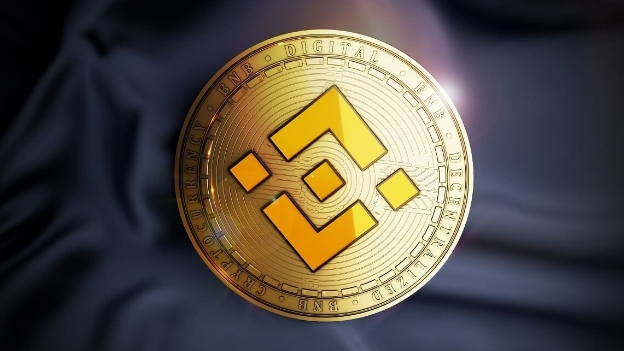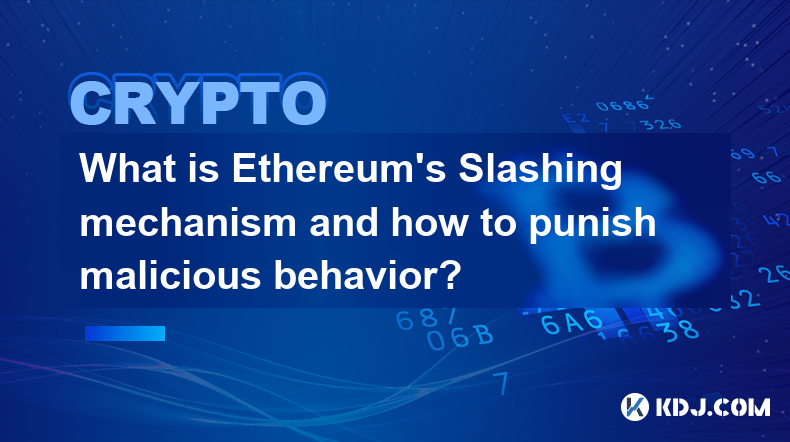-
 Bitcoin
Bitcoin $81,470.6259
-2.28% -
 Ethereum
Ethereum $1,790.7527
-2.95% -
 Tether USDt
Tether USDt $0.9999
0.03% -
 XRP
XRP $2.0607
-6.00% -
 BNB
BNB $591.1549
-2.91% -
 Solana
Solana $124.2009
-1.34% -
 USDC
USDC $1.0000
0.01% -
 Dogecoin
Dogecoin $0.1621
-5.61% -
 Cardano
Cardano $0.6372
-6.99% -
 TRON
TRON $0.2326
0.82% -
 Toncoin
Toncoin $3.8888
0.80% -
 Chainlink
Chainlink $13.0942
-5.24% -
 UNUS SED LEO
UNUS SED LEO $9.1023
-5.55% -
 Stellar
Stellar $0.2605
-3.86% -
 Avalanche
Avalanche $18.3294
-6.73% -
 Shiba Inu
Shiba Inu $0.0...01207
-4.91% -
 Sui
Sui $2.2362
-7.91% -
 Hedera
Hedera $0.1579
-8.64% -
 Polkadot
Polkadot $3.9790
-4.28% -
 Litecoin
Litecoin $81.6801
-5.49% -
 MANTRA
MANTRA $6.1848
-3.34% -
 Bitcoin Cash
Bitcoin Cash $291.7782
-5.06% -
 Dai
Dai $0.9999
-0.02% -
 Bitget Token
Bitget Token $4.4587
-4.83% -
 Ethena USDe
Ethena USDe $0.9999
-0.01% -
 Pi
Pi $0.6892
-10.83% -
 Hyperliquid
Hyperliquid $12.5163
-0.38% -
 Monero
Monero $215.9594
-0.93% -
 Uniswap
Uniswap $5.7942
-3.66% -
 Aptos
Aptos $5.1254
-4.01%
how to open bnb account online
Opening a Binance account is an easy and secure process, allowing you to access the world's largest digital asset exchange in just a few minutes.
Nov 19, 2024 at 04:40 am

How to Open a Binance Account Online: A Comprehensive Guide
Binance, the world's largest digital asset exchange, has revolutionized the way individuals trade and invest in cryptocurrencies. Opening a Binance account is a quick and straightforward process that can be completed in a matter of minutes. This guide will provide you with step-by-step instructions on how to create a Binance account online, ensuring a secure and seamless trading experience.
Step 1: Navigate to the Binance Website
- Visit the official Binance website at binance.com.
- Click on the "Create Account" button located at the top right corner of the page.
Step 2: Choose a Registration Method
- Binance offers two registration methods: email address or mobile phone number.
- Choose your preferred method and provide the necessary information.
- Please use a valid email address or mobile phone number to ensure you can receive verification and security updates.
Step 3: Set Up a Strong Password
Create a password that is complex and meets the following requirements:
- Minimum of 8 characters
- Combination of uppercase and lowercase letters
- Inclusion of numbers and/or symbols
- Your password should be unique and different from passwords used on other platforms to enhance security.
Step 4: Complete the Verification Process
- To comply with KYC (Know Your Customer) regulations, Binance requires you to complete a verification process.
- Upload a clear and recent photo ID (passport or driver's license).
- Take a selfie holding your ID, ensuring your face and ID are visible.
- Binance will review your documents and verify your identity promptly.
Step 5: Set Up Two-Factor Authentication (2FA)
- For additional account security, Binance strongly recommends enabling 2FA.
- You can choose to use Google Authenticator, SMS, or hardware devices like YubiKey.
- Follow the on-screen instructions to set up 2FA and ensure your account is protected against unauthorized access.
Step 6: Fund Your Binance Account
- Once your account is verified and secured, you can deposit funds to start trading.
- Binance offers multiple deposit methods, including bank transfer, credit/debit card, and third-party payment gateways.
- Choose a convenient deposit method and follow the instructions provided.
Step 7: Start Trading
- With your account funded, you can access Binance's trading platform.
- Explore the different trading pairs, including spot, futures, and margin trading.
- Place your first trade and participate in the vibrant cryptocurrency market.
Additional Tips for Binance Account Security
- Use a cold wallet for storing large amounts of cryptocurrency.
- Enable anti-phishing codes to protect against phishing attacks.
- Regularly change your password and update your security settings.
- Be cautious of unsolicited messages or emails claiming to be from Binance.
- Report any suspicious activity or security breaches to Binance support immediately.
By following these steps and adhering to the security tips mentioned above, you can create a Binance account online and enjoy a safe and convenient cryptocurrency trading experience.
Disclaimer:info@kdj.com
The information provided is not trading advice. kdj.com does not assume any responsibility for any investments made based on the information provided in this article. Cryptocurrencies are highly volatile and it is highly recommended that you invest with caution after thorough research!
If you believe that the content used on this website infringes your copyright, please contact us immediately (info@kdj.com) and we will delete it promptly.
- Dogecoin (DOGE) Price Could Witness Massive Growth If It Serves as a Payment Method Across the Elon Musk Ecosystem
- 2025-03-31 18:00:12
- Elon Musk Quashes Hopes of Dogecoin (DOGE) Being Included in the U.S. Department of Government Efficiency (D.O.G.E.)
- 2025-03-31 18:00:12
- Musk Clarifies $DOGE and DOGE are Different, Dogecoin Prices Plummet
- 2025-03-31 17:55:12
- Bitcoin (BTC) Price Will Explode Higher as Liquidity Surges, Raoul Pal Predicts
- 2025-03-31 17:55:12
- Bearish Clouds Continue to Hover Over the Crypto Markets, BTC Drops Below $82K
- 2025-03-31 17:50:12
- With a Growing Community, Built-in AI Utility, and a Presale Heating Up Fast, It's Drawing Early Comparisons to SHIB's Legendary Rise
- 2025-03-31 17:50:12
Related knowledge

What is Ethereum’s Slashing mechanism and how to punish malicious behavior?
Feb 20,2025 at 03:08am
Key PointsOverview of slashingDifferent types of slashing in EthereumIncentives and consequences of slashingIdentifying and reporting slashed validatorsOngoing discussions and potential improvementsEthereum's Slashing Mechanism: Punishing Malicious BehaviorEthereum's slashing mechanism is an essential tool for ensuring network security and punishing mal...

What is the verifier node of Ethereum and how to become a verifier?
Feb 19,2025 at 06:00pm
The Verifier Node of Ethereum: A Comprehensive GuideKey Points:What is a Verifier Node?How to Become a Verifier NodeResponsibilities and Rewards of a Verifier NodeMinimum Requirements for Becoming a Verifier NodePotential Difficulties in Running a Verifier Node1. What is a Verifier Node?A Verifier Node is an independent entity on the Ethereum network th...

What is Ethereum’s staking, and how to participate and earn money?
Feb 19,2025 at 04:37pm
Key Points:Understanding Ethereum's Staking MechanismSteps to Participate in StakingBenefits and Rewards of StakingSecurity and Risk ConsiderationsTechnical Requirements and Hardware OptionsPotential Challenges and Troubleshooting TipsFAQs on Ethereum StakingWhat is Ethereum's Staking?Proof-of-Stake (PoS) is a consensus mechanism used in blockchain netw...

What is Ethereum’s DAO (Decentralized Autonomous Organization) and how does it work?
Feb 20,2025 at 03:12am
Key PointsDefinition and Structure of a DAOGovernance and Decision-Making in DAOsBenefits and Use Cases of DAOsChallenges and Limitations of DAOsWhat is Ethereum's DAO (Decentralized Autonomous Organization) and How Does It Work?Definition and Structure of a DAOA Decentralized Autonomous Organization (DAO) is an innovative governance and management fram...

What is Ethereum's multi-signature wallet and how to improve security?
Feb 20,2025 at 02:18pm
Key Points:Understanding the Concept of a Multi-Signature WalletBenefits and Drawbacks of Multisig WalletsRequirements for Setting Up a Multisig WalletStep-by-Step Guide to Generating a Multisig WalletImplementing Strategies for Enhanced Security1. Understanding the Concept of a Multi-Signature WalletA multi-signature (multisig) wallet in the Ethereum e...

What is Ethereum's oracle and how to provide data for smart contracts?
Feb 21,2025 at 01:30am
Key Points:Understanding the concept of oracles in EthereumExploring different types of oraclesDetailed guide on how to provide data for smart contractsAddressing potential challenges and considerationsWhat is Ethereum's Oracle?Oracles are crucial components in the Ethereum ecosystem, enabling smart contracts to access real-world data and off-chain even...

What is Ethereum’s Slashing mechanism and how to punish malicious behavior?
Feb 20,2025 at 03:08am
Key PointsOverview of slashingDifferent types of slashing in EthereumIncentives and consequences of slashingIdentifying and reporting slashed validatorsOngoing discussions and potential improvementsEthereum's Slashing Mechanism: Punishing Malicious BehaviorEthereum's slashing mechanism is an essential tool for ensuring network security and punishing mal...

What is the verifier node of Ethereum and how to become a verifier?
Feb 19,2025 at 06:00pm
The Verifier Node of Ethereum: A Comprehensive GuideKey Points:What is a Verifier Node?How to Become a Verifier NodeResponsibilities and Rewards of a Verifier NodeMinimum Requirements for Becoming a Verifier NodePotential Difficulties in Running a Verifier Node1. What is a Verifier Node?A Verifier Node is an independent entity on the Ethereum network th...

What is Ethereum’s staking, and how to participate and earn money?
Feb 19,2025 at 04:37pm
Key Points:Understanding Ethereum's Staking MechanismSteps to Participate in StakingBenefits and Rewards of StakingSecurity and Risk ConsiderationsTechnical Requirements and Hardware OptionsPotential Challenges and Troubleshooting TipsFAQs on Ethereum StakingWhat is Ethereum's Staking?Proof-of-Stake (PoS) is a consensus mechanism used in blockchain netw...

What is Ethereum’s DAO (Decentralized Autonomous Organization) and how does it work?
Feb 20,2025 at 03:12am
Key PointsDefinition and Structure of a DAOGovernance and Decision-Making in DAOsBenefits and Use Cases of DAOsChallenges and Limitations of DAOsWhat is Ethereum's DAO (Decentralized Autonomous Organization) and How Does It Work?Definition and Structure of a DAOA Decentralized Autonomous Organization (DAO) is an innovative governance and management fram...

What is Ethereum's multi-signature wallet and how to improve security?
Feb 20,2025 at 02:18pm
Key Points:Understanding the Concept of a Multi-Signature WalletBenefits and Drawbacks of Multisig WalletsRequirements for Setting Up a Multisig WalletStep-by-Step Guide to Generating a Multisig WalletImplementing Strategies for Enhanced Security1. Understanding the Concept of a Multi-Signature WalletA multi-signature (multisig) wallet in the Ethereum e...

What is Ethereum's oracle and how to provide data for smart contracts?
Feb 21,2025 at 01:30am
Key Points:Understanding the concept of oracles in EthereumExploring different types of oraclesDetailed guide on how to provide data for smart contractsAddressing potential challenges and considerationsWhat is Ethereum's Oracle?Oracles are crucial components in the Ethereum ecosystem, enabling smart contracts to access real-world data and off-chain even...
See all articles






















































































